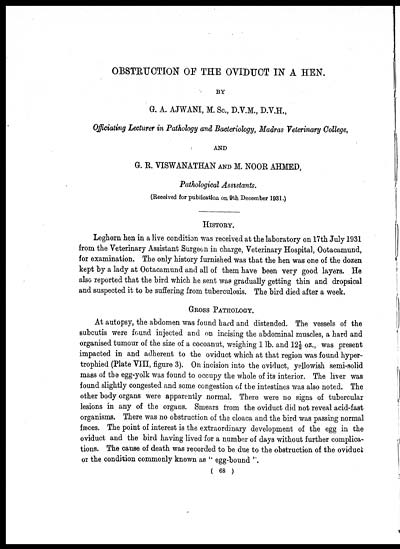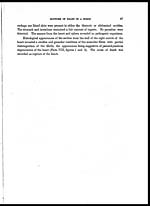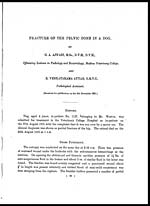Medicine - Veterinary > Veterinary colleges and laboratories > Indian journal of veterinary science and animal husbandry > Volume 2, 1932 > Original articles > Obstruction of the oviduct in a hen
(86) Page 68
Download files
Individual page:
Thumbnail gallery: Grid view | List view

OBSTRUCTION OF THE OVIDUCT IN A HEN.
BY
G. A. AJWANI, M. Sc., D.V.M., D.V.H.,
Officiating Lecturer in Pathology and Bacteriology, Madras Veterinary College,
AND
G. R. VISWANATHAN AND M. NOOR AHMED,
Pathological Assistants.
(Received for publication on 9th December 1931.)
HISTORY.
Leghorn hen in a live condition was received at the laboratory on 17th July 1931
from the Veterinary Assistant Surgeon in charge, Veterinary Hospital, Octacamund,
for examination. The only history furnished was that the hen was one of the dozen
kept by a lady at Octacamund and all of them have been very good layers. He
also reported that the bird which he sent was gradually getting thin and dropsical
and suspected it to be suffering from tuberculosis. The bird died after a week.
GROSS PATHOLOGY.
At autopsy, the abdomen was found hard and distended. The vessels of the
subcutis were found injected and on incising the abdominal muscles, a hard and
organised tumour of the size of a cocoanut, weighing 1 lb. and 12½ oz., was present
impacted in and adherent to the oviduct which at that region was found hyper-
trophied (Plate VIII, figure 3). On incision into the oviduct, yellowish semi-solid
mass of the egg-yolk was found to occupy the whole of its interior. The liver was
found slightly congested and some congestion of the intestines was also noted. The
other body organs were apparently normal. There were no signs of tubercular
lesions in any of the organs. Smears from the oviduct did not reveal acid-fast
organisms. There was no obstruction of the cloaca and the bird was passing normal
fæces. The point of interest is the extraordinary development of the egg in the
oviduct and the bird having lived for a number of days without further complica-
tions. The cause of death was recorded to be due to the obstruction of the oviduct
or the condition commonly known as " egg-bound ".
( 68 )
Set display mode to: Large image | Zoom image | Transcription
Images and transcriptions on this page, including medium image downloads, may be used under the Creative Commons Attribution 4.0 International Licence unless otherwise stated. ![]()
| Permanent URL | https://digital.nls.uk/75227444 |
|---|
| Description | Covers articles from 1932. |
|---|




